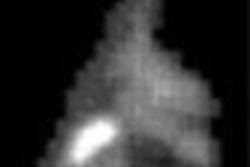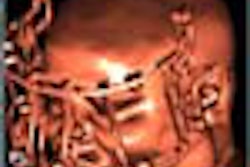Practical Mathematics in Nuclear Medicine Technology by Patricia Wells
Society of Nuclear Medicine, Reston, VA, 1999, $63.
This mathematics workbook fills an information gap that has been overlooked for too long. The book by Patricia Wells, and the accompanying CD of practice questions by Martha Pickett, explores a range of problems that typically challenge the not-so-mathematically-inclined.
The table of contents takes a systematic approach by dividing frequently encountered math problems in nuclear medicine into small, manageable sections. Examples include conversions, error propagation, statistical usage of standard deviations, radiation dose exposure rate, and all the relevant clinical issues such as window calculations, energy resolution, and decay problems.
The sample problems given in the radiopharmacy section are especially helpful because they are not easily obtainable. Calculation examples for routine clinical procedures are included but not emphasized. The scope is comprehensive at the technologist's level. Sample problems are followed by problems for the reader, with all answers given in the back of the book. A general index is a further aid to quickly finding the example the reader might be looking for.
Additional strong points include the books overall clarity, and its choice of subject material. For example, instructions showing how to determine the volume to be discarded when adjusting a unit dose (p.197) are very easy to use. The needs of the technologist were obviously a high priority to the authors.
A future edition of this book will hopefully have more problems to solve, with information on the correct usage of scientific terminology (i.e. dose vs. exposure, consistency vs. precision) included. It would also be helpful to provide the specific gamma constant in "nuclear medicine technologist's" units (i.e., mR/hr per milliCurie per meter) for all of the commonly encountered radiopharmaceuticals.
Finally, examples on the use of quality control, statistical controls, a calculation of dead time, and xenon trap efficiency would be helpful. A small inconsistency is seen on the suggestion for energy resolution. While the CD suggests 8-12%, the book recommends 6.5-12%.
This book is recommended for students of nuclear medicine technology, and as a companion to the more conventional texts on the subject for working departments.
By William Pavlicek and Mary Beth PeterAuntMinnie.com contributing writers
William Pavlicek, Ph.D., is the staff diagnostic physicist and radiation safety officer, department of radiology, at the Mayo Clinic Scottsdale in Arizona. He has been an instructor in nuclear medicine technology.
Mary Beth Peter is an imaging physics specialist in the department of radiology at the Mayo Clinic Scottsdale in Arizona. She is responsible for nuclear quality control and acceptance testing, including mobile PET.
If you are interested in reviewing a book, let us know at [email protected].
The opinions expressed in this review are those of the author, and do not necessarily reflect the views of AuntMinnie.com.
Copyright © 2001 AuntMinnie.com




















